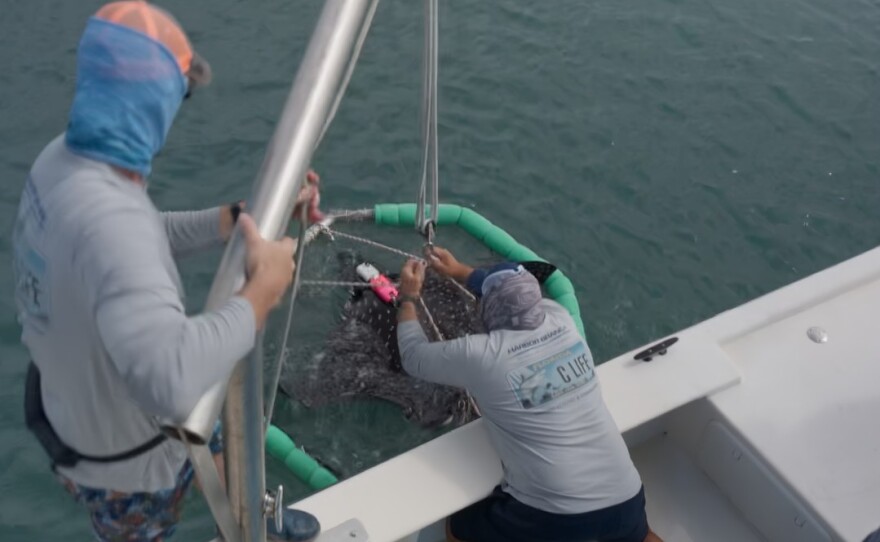Marine researchers from Florida Atlantic University have revealed a new perspective on marine life by exploring the elusive behavior of stingrays.
"Biologging" is a non-invasive method of tracking animals in the wild and is transforming how scientists study movement, behavior and social interactions.
FAU researchers, however, say stingrays, especially eagle rays, get overlooked.
“These animals are powerful, fast-moving and live in dynamic, high-energy environments, which makes tagging them a real challenge,” said Matt Ajemian, an associate research professor at FAU's Harbor Branch Oceanic Institute. He's also a senior author of a new FAU study on stingrays.
Eagle rays are endangered around the world. The batoid species — which include all types of rays and sawfish — are at a growing risk of extinction. Stingrays are particularly difficult to tag because they have no prominent dorsal fin and are "ultrasmooth.” This makes it very difficult to attach the average tag to track them.
Ajemian said he and other researchers had to get creative when trying to biolog them.
READ MORE: The mystery of the Florida Keys' dying sawfish
“Our goal was to create a system that could be applied in seconds, stay on during natural behaviors, and collect rich, multi-dimensional data,” Ajemian said.
The team of FAU researchers are the first to successfully develop and field test a multi-sensor biologging tag on the elusive whites-spotted eagle ray.
Inspired by techniques used on dolphins and whales, the researchers were able to log the longest documented external tag on a ray — about 60 hours.
This new system uses silicone suction cups and straps which are secured to small openings near the stingrays’ eyes called spiracles. With the tags, researchers were able to identify key behaviors of a white-spotted eagle ray — like foraging, burrowing and eating habits.
“We’re now able to observe not just where these rays go, but how they feed, how they move through their habitats, and how they interact with other species — insights that were virtually impossible to capture before,” Ajemian said.
Recent observations from the tags revealed that rays tend to prefer inlets with high flow. The tags also documented the sounds they make when eating hard shelled creatures, like clams. The sounds of these eating habits are important because, according to FAU doctoral marine biology student Cecilia Hampton, if researchers can determine what their eating habits sound like, they can determine what creature is being eaten without a camera.
In searching for eagle rays, Hampton and FAU researchers tried to find them by tracking down their food source — clams. The clams are found on the bottom of the ocean.
Her research is focused on examining the interactions between hard shelled prey and their predators, like stingrays.
“There's a lot of interest in which way these ecological relationships go and how we can monitor the health of ecosystems versus how we can augment it in conservation work,” Hampton said. “I think that there is potential for eagle rays to be sort of a sentinel species.”
One example of sentinel species are manatees. Studying their health and behavior can help unlock information about the overall environment and ecosystem. Any behavioral changes could be an indicator of environmental stressors.
The FAU researchers said their goal is to study more smooth and large predators to better understand their prey.
Hampton says this research could be used to further restoration efforts, like restoring the queen conch in the Caribbean.
For now, says Ajemian, they are planning to try the tags on turtles next. There are only a handful of tags the researchers have at their disposal.
“This isn't exactly plug and play,” Ajemian said.
He said they have lost many tags in the process of finding the best attachment style for the stingrays while they are in their natural habitat.
“There's a lot of things that have to go right in the field. Essentially we say the stars have to align," Ajemian said. "But you know, we've been getting pretty good at this.”
According to the researchers, every recovery of footage is a celebration. “It should always be honored as such,” Ajemian said.








